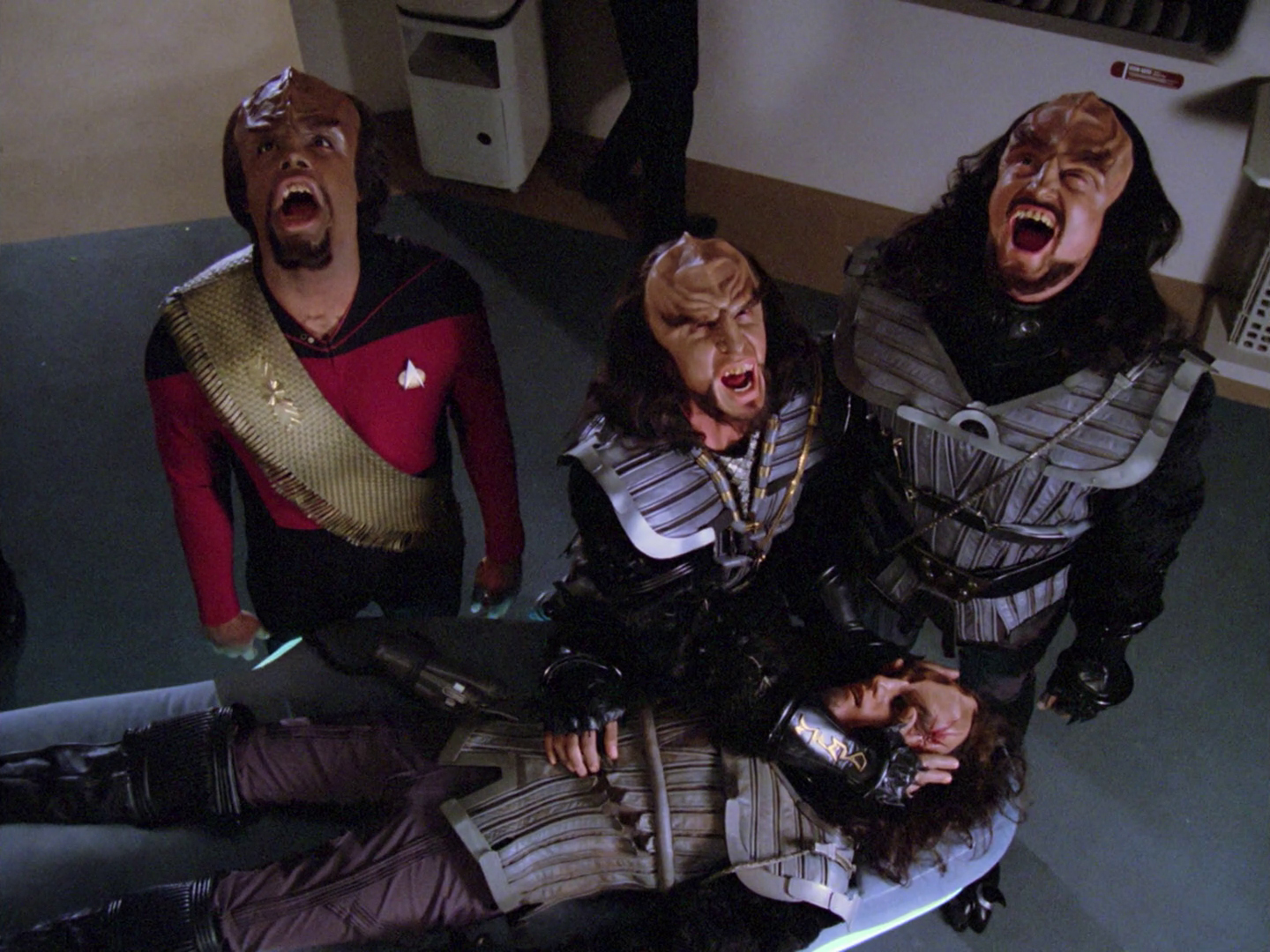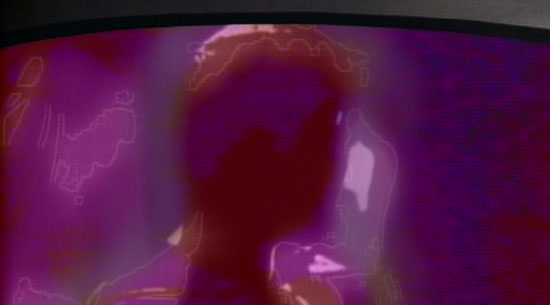
The Enterprise finds a small group of Klingons on a crippled freighter who are actually renegades threatening “the alliance.” There’s no talk of the ice world of Hoth or X-Wings, so I’ll go ahead and guess the alliance in question is the one between the Federation and its former nemesis, the Klingon Empire. The renegade Klingons, of course, long for the “old ways” and threaten to destroy the Enterprise to prevent capture when a Klingon warship comes calling. Worf’s loyalty to Starfleet is tested (a theme we’ll see time and again for the next 12 years) but our favorite Klingon (belatedly, as we’ll discuss) does the right thing and saves the day by killing one of the Klingons who threaten the ship.

Why it’s important
The presence of Worf in TNG’s first season had been an indication that things were somewhat copacetic between the Federation and the Empire — at least, compared with most TOS-era Trek. But this is the first episode that cements the bromance that we see for most of the next decade or so between the two powers. The ending of hostilities/formation of an alliance with the Klingons also becomes the major point of “Star Trek VI: The Undiscovered Country”, which premiered about three years after this episode, though it took place about 80 years earlier in the Star Trek universe.
Of course, this is the first episode to explore Worf’s backstory (what’s up, farming colony of Galt?) and details mentioned here pop up over the next decade. Lots of other Klingon items — the death scream, etc. — show up later, too. As noted previously, the Klingons really changed (beyond the forehead ridges) starting around “Star Trek III: The Search for Spock” and continuing through TNG and DS9. It’s an ongoing evolution, as we’ll discuss below.

What doesn’t hold up
The episode paints Worf as a sort of unknown among Klingons. While his rescue by a human Starfleet officer and subsequent backstory are mentioned, his presence in Starfleet is a surprise to Korris and Konmel. That makes sense in this episode, but it’s odd given apparent high standing of the House of Mogh — named for Worf’s father — in future episodes. Wouldn’t the average American know if a Rockefeller were serving in the Russian navy?
Smaller details are off, too. Korris notes “the traitors of Kling”, which was either a bad idea for the name of the Klingon homeworld (called “Kronos” starting in “Star Trek VI”) or a strange term used as some sort of generic way to describe the Klingon people — i.e., “the traitors of man.” If the latter is the case, it’s odd that we never hear that kind of language again. Or maybe it’s just good that the term was put out to pasture.
From a character standpoint, Worf knew Korris and Konmel were up to no good pretty early in the episode — they admit destroying a Klingon ship — and his inaction nearly cost 1,000 people their lives. While this works dramatically, it doesn’t fit Worf’s paranoid/dutiful persona that we see in subsequent years, nor is it something we’d want to see from any member of the Enterprise crew (Picard asks Data about his loyalty in “Datalore”, when our favorite android is put in a similar situation). That said, the rest of the Enterprise crew is pretty chill about letting the Klingons have the run of the ship, given the odd circumstances surrounding their recovery from the freighter. Chalk it up to first-season rough spots, I guess. Keep in mind that Picard, a few years later, is actually hesitant to let three kids see the Battle Bridge. Maybe Picard trusts shady Klingons more than some kid who does a science project about radishes?
Final thoughts
This is a fascinating episode for a lot of reasons, but I love Picard and Riker’s reaction to learning that Klingons were on the freighter. It shows the schism between making the Klingons our new BFFs while still acknowledging the bad-dudes backstory. It’s interesting, too, because the portrayal of Klingons that we truly see starting in the second and third seasons — more snarling and animalistic — is fairly subdued here. The reliable Vaughn Armstrong puts in a good performance as Korris, but his portrayal comes across strangely (“I will speak only to my countryman — only to Worf!”). He sounds more Cardassian than Klingon.
Lastly, the whole thing at the beginning of the episode where the bridge crew can see from Geordi’s perspective while he’s on the freighter with Riker and Data was really odd. It had little to do with the rest of the episode, it makes Starfleet technology seem limited (are visual feeds that hard to pull off in the 24th century?) and it’s especially weird as we never see the crew try this again. It almost comes across as the crew wanting to see what Geordi sees rather than wanting to use a visual feed for the sake of a visual feed. And having a visual feed would have been especially useful to Picard in early TNG, when he often asks Riker-led away teams what they see. Having a visual record of the Borg ship in “Q Who?”, for instance, would have been pretty valuable.
Coming later this week …
The crew ends its first season by learning the term “low-mileage pit woofie.” Oh, and the Romulans are back.
